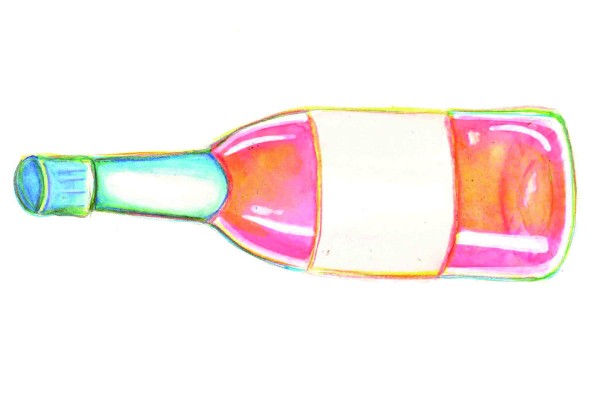Dessert wine, you gotta love her. Perfect for a cheeky necking before a night out, or something sweet you can sip while watching the hit movie ‘Bridesmaids’. Compared to other wines, dessert wine is particularly palatable and easy to drink. But rumour has it, they kind of taste the same all around.
Now don’t come at me in my DMs, wine lovers, but I kind of agree. What really is the difference? The sweetness, amount of grapes, merely brands? Wine is confusing, but all I know is that they use white grapes, sometimes with a hint of the red/purple skins for colour and taste. Regardless, Arts students - this one’s for you.
Moscato is common, the girl next door, if you wish. Moscato is for those who are invited to a party last minute and need to hit New World to grab a drink, or for those who don’t really want to get drunk because they have ‘shit to do tomorrow’. Most are around 7 to 10%, and experts recommend this paired with seafood and fruits. I recommend you get a stronger wine. She is objectively the most bitter of the three, but they are dessert wines, so you know a sugar rush is guaranteed.
Rosé is a personal favourite as a wine dummy. She is sweet, she is pink, she is everything that you would want in a wine and more - as long as you look for the highest percentage, of course. Rosé, of the three, does indeed have the highest percentage. You’ll find Rosé in the cold grasp of a person at a party on Leith, crying on the footpath, waiting for their friend to finally take them to McDonald’s and put them to bed. Rosé is for liabilities and headaches in the morning.
Moscato Rosé is a stunning compromise - the Moscato balances out the sweetness, the Rosé cuts through the slight bitterness. Moscato Rosé is Hannah Montana and Miley Cyrus; the best of both worlds. You’ll find this lovely mix in the form of Jacob’s Creek for example, yet is only 7.5%. It is a little bit worth it; she is refreshing with a lovely cheese platter, or a good pick me up for when you just got ditched by your friends, or the person you like, and have lost all purpose in life.
The difference between these wines are obvious, but even for a regular wine drinker like me, it wasn’t that easy to tell the difference in a blind taste test. This might turn out exactly the same as the bourbon cola comparison, or perhaps a random sample of people will be smarter than I am. Some friends were gathered, wine was drunk, and comparisons drawn.
For consistency, and money-wise because it’s cheap, we chose the absolute legend that is Jacob’s Creek for all wine tastings. Due to the different colouration the cups weren’t see through, and the aim of this experiment was to find out if everyday students could tell the difference between the three wines. The hypothesis was that the majority of students would be able to, but no one really knows how this will turn out.
The method was as follows: Grab a sample of 15 friends, put the drinks into three cups. Cup 1 contained Rosé, Cup 2 contained Moscato Rosé, and Cup 3 contained Moscato. One by one I wrote down each person’s response, and the answers were not revealed until every person had completed the experiment.
Here’s some examples of students’ answers.
Student #3 thought Rosé was in Cup 1, Moscato in Cup 2, and Moscato Rosé in Cup 3.
Student #6 thought Moscato Rosé was in Cup 1, Rosé in Cup 2, Moscato in Cup 3.
Measured was the amount of time each drink was identified correctly. Rosé was correctly identified the most, at approximately 66.66% of the time out of the Rosé data. Moscato followed this at around 53.33% of the time identified out of the Moscato data, and Moscato Rosé the least correctly identified at around 40% of the time out of the Moscato Rosé data.
Below is the percentage of correct identifications overall in relation to each drink, as well as the raw data.
From this data, we can come to the conclusion that all dessert wine is objectively the same when you can’t see what the hell you’re drinking. The hypothesis that people would know what they are drinking is partially supported, in that majority of people knew they were drinking rosé- and who wouldn’t? Rosé is so common and sweet, and there is guaranteed to be a bottle at every Humanities party you go to, so it made sense. But the other two is understandable, Moscato Rosé isn’t that common, and Moscato won’t get you munted- a requirement for student wine. However, I am no scientist nor wine connoisseur, and am terrible at statistics, therefore for these results to be accurate it should be done by anyone else.
Wine is cheap, but wine isn’t everyone’s first choice. Wine drinkers everywhere, sorry that we can never be as good as you. We will never know the subtle hint of berry that the aroma brings from the swirling of a wine glass. I will continue to drink my wine from the bottle or mug. Anyway, drink up Humanities kids.



